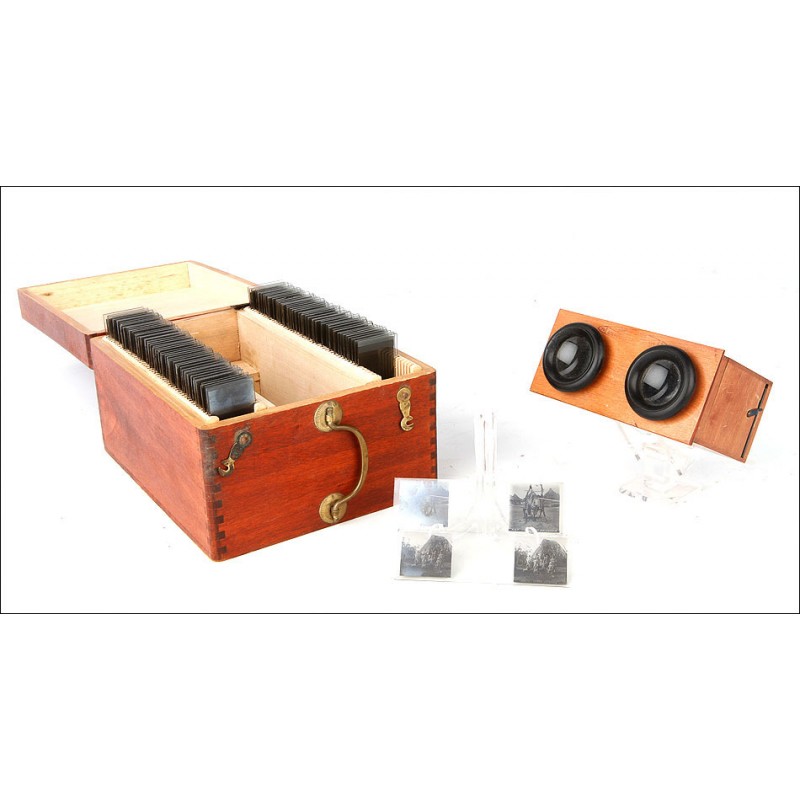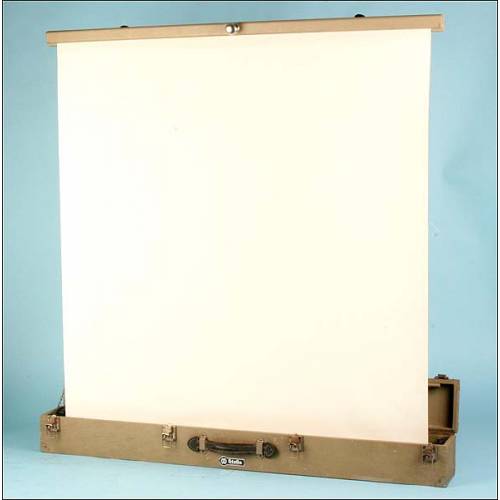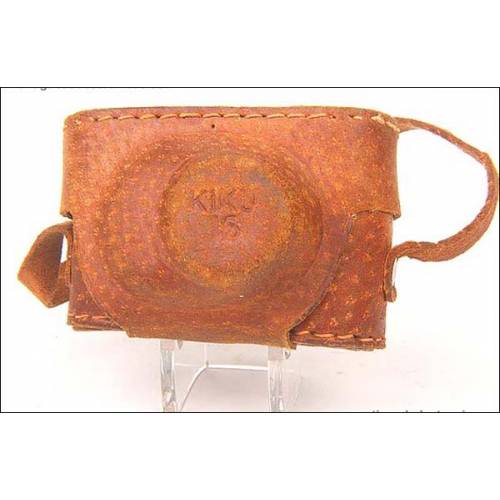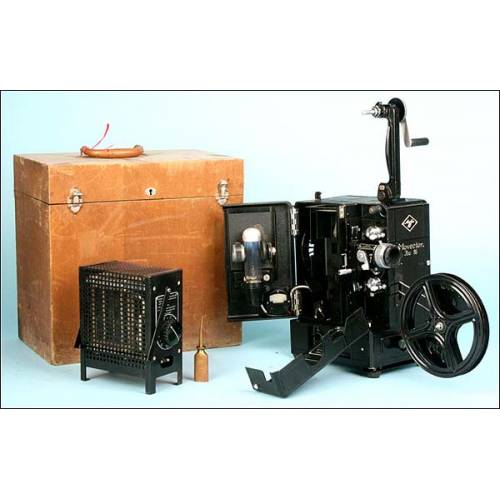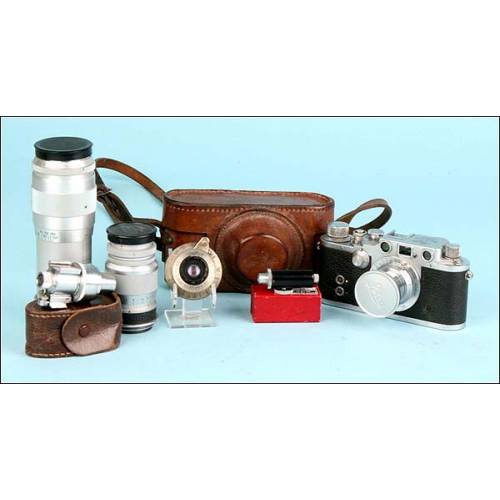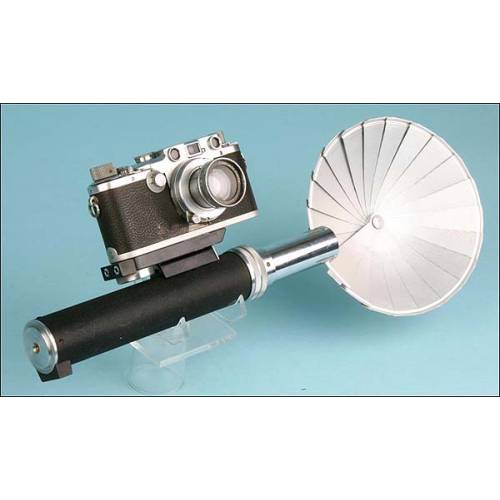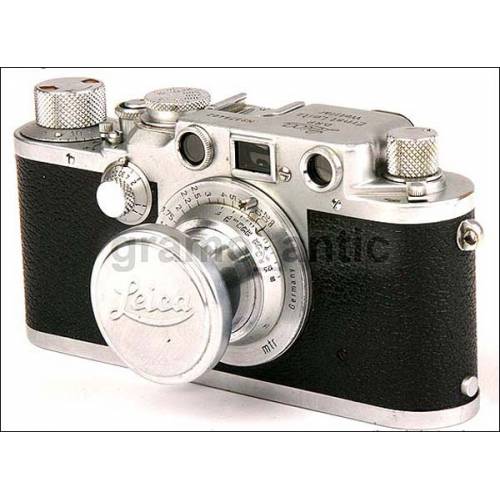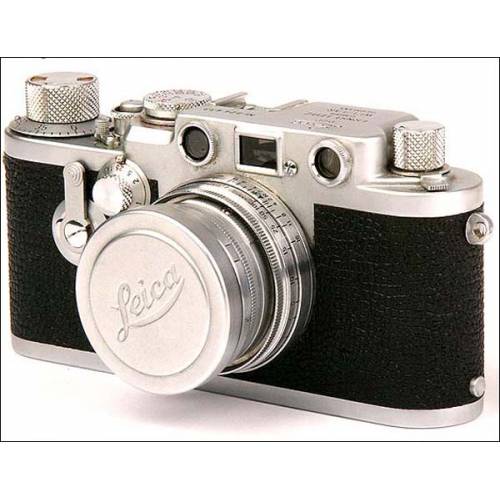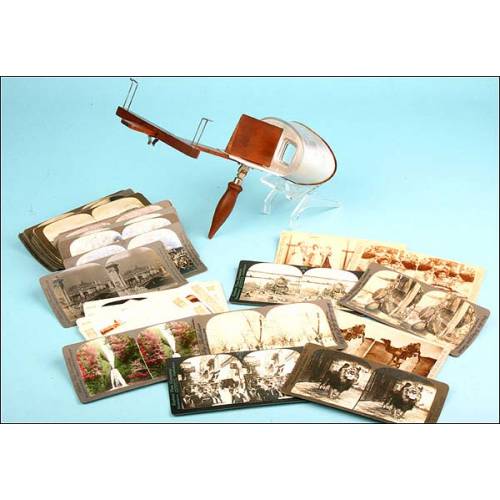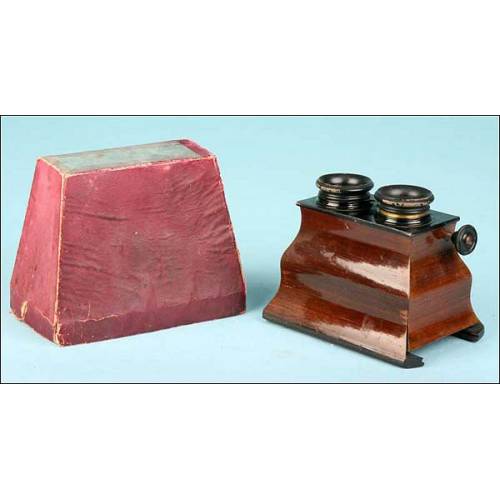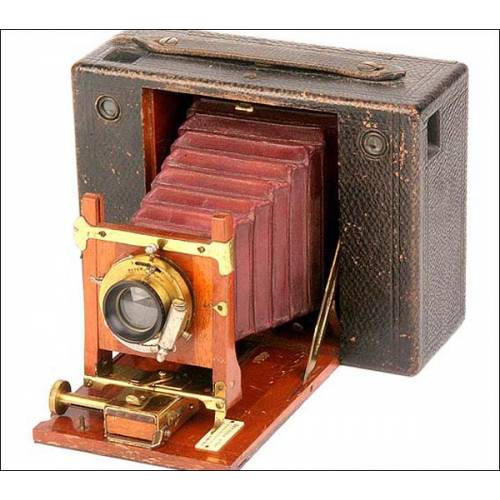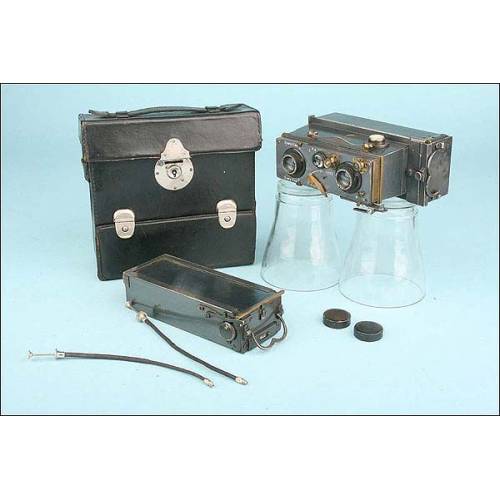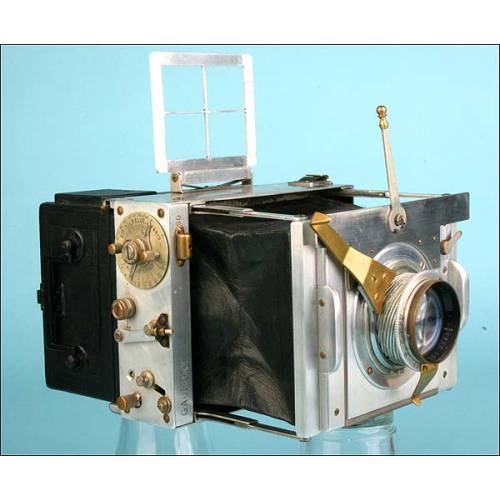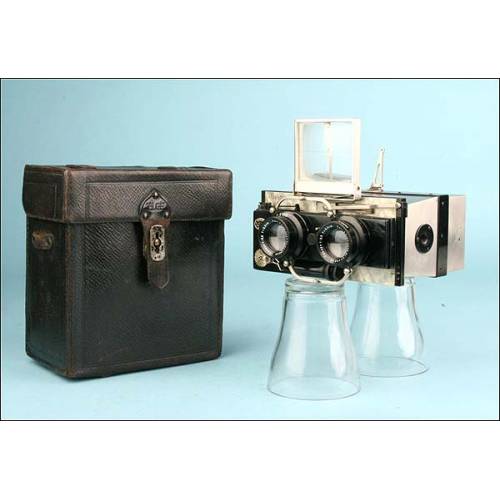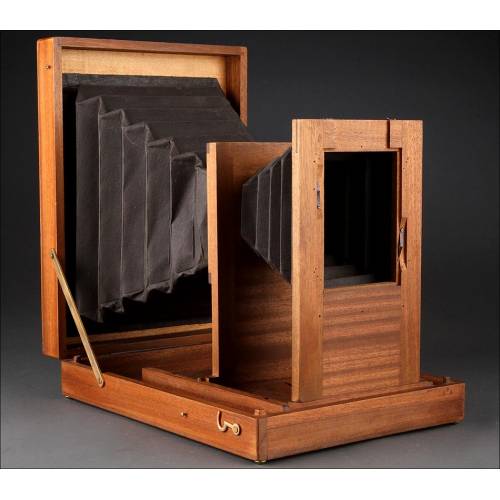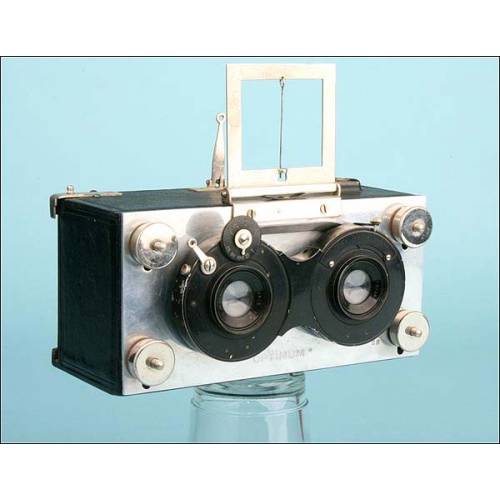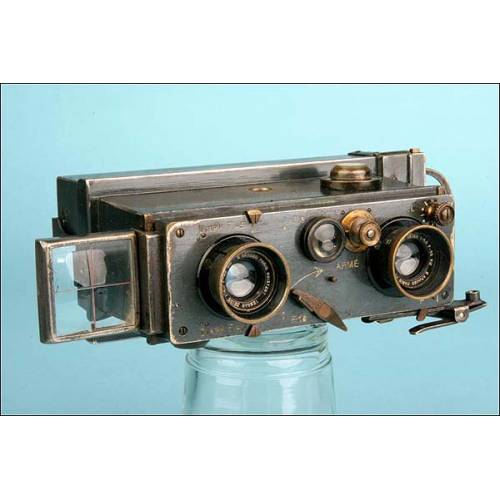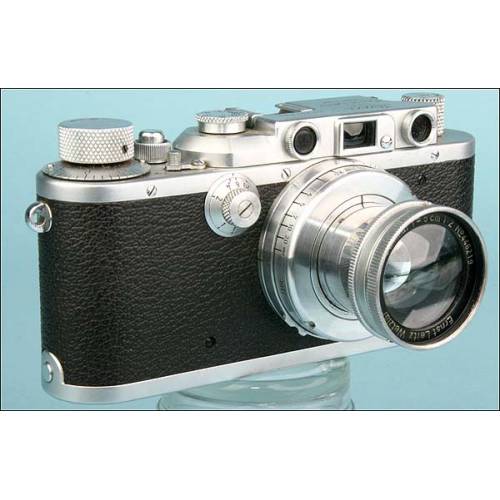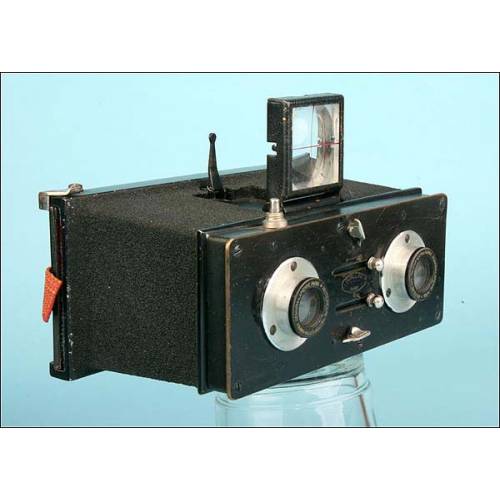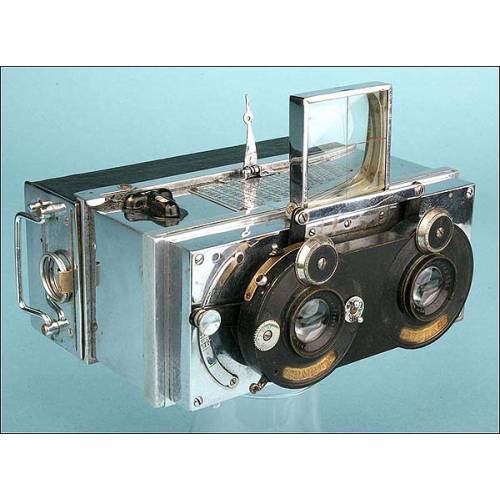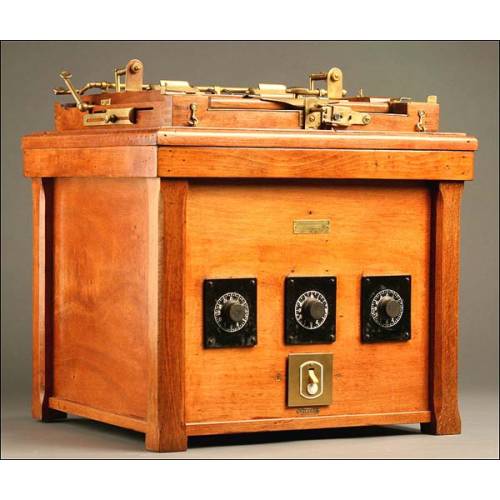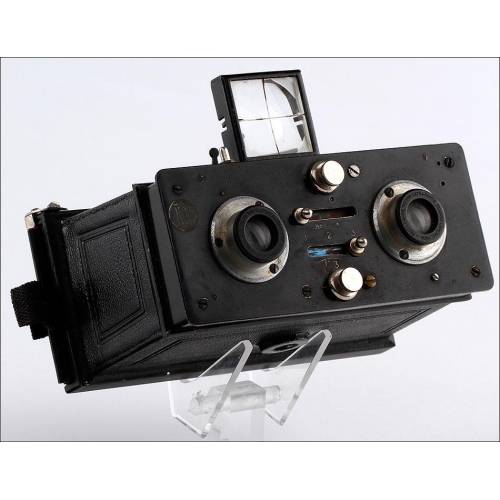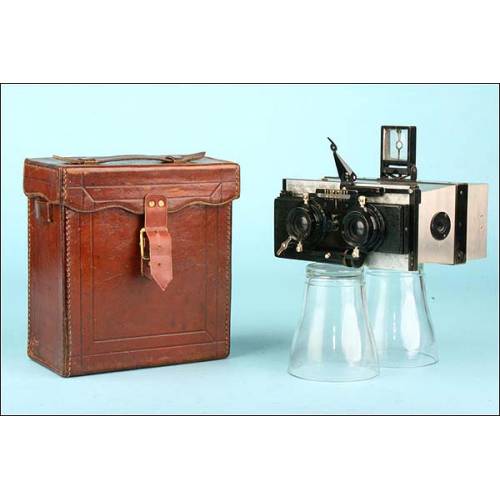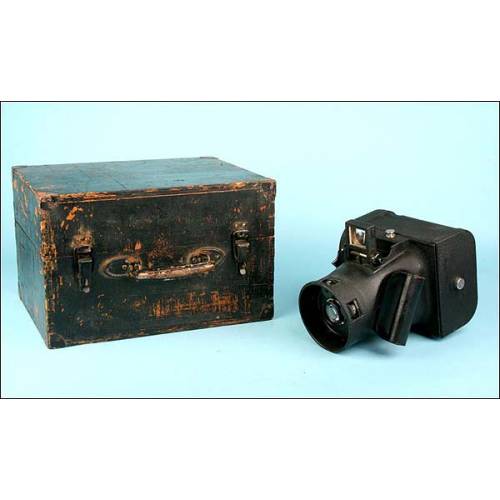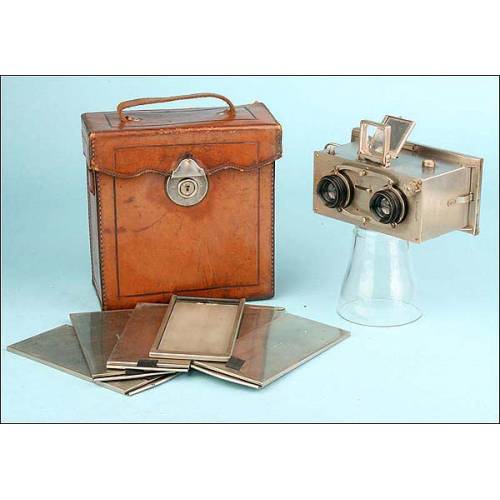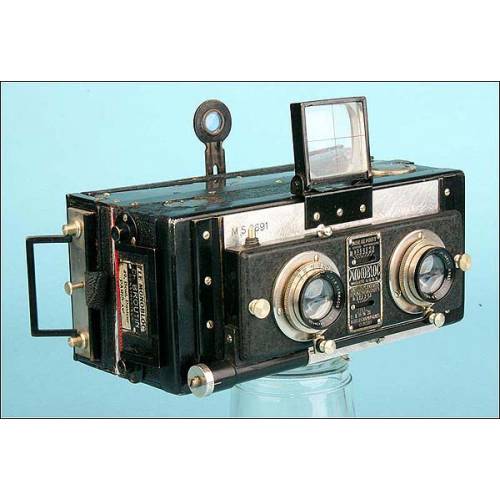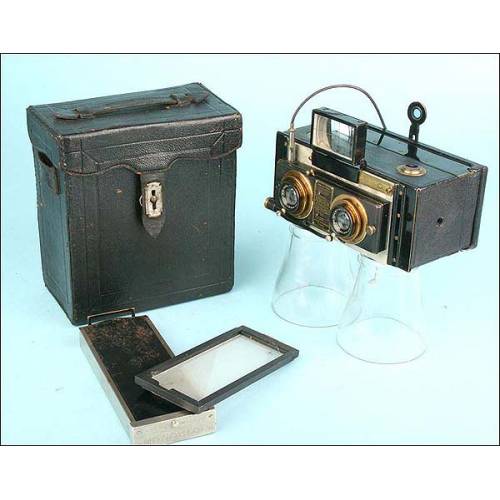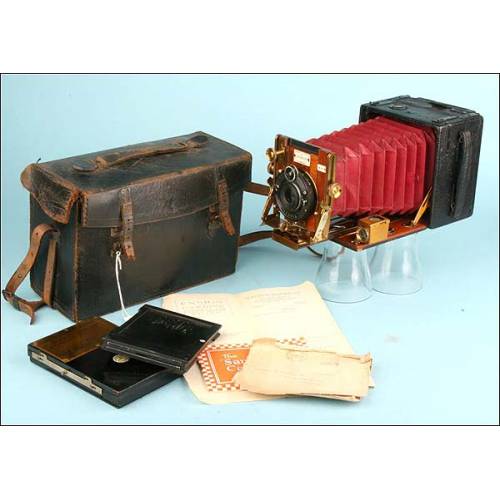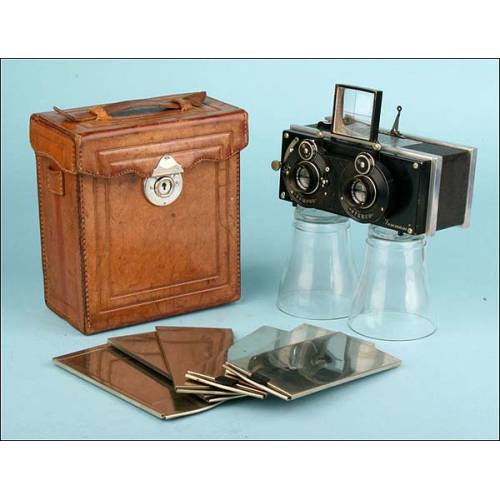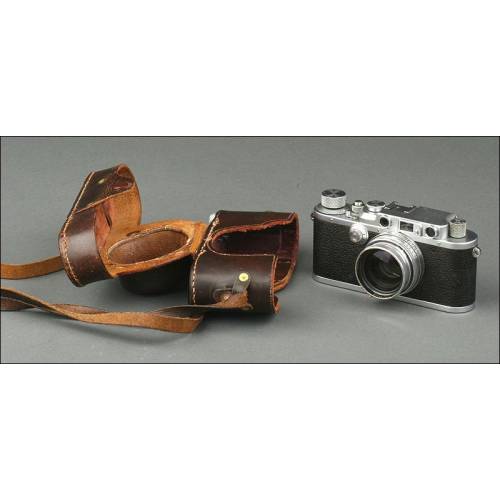B-917
Antique Stereoscopic Viewfinder 100x30, Ca. 1910
Antique stereoscopic viewfinder for unconventional format plates (100x30 mm). Collector's item.
Sold!
Fine antique stereo viewer made in France in the early 20th century. The most attractive feature of this item is its rare quality: it is designed to watch 100x30mm plates, when the most usual plate format is 107x45mm or more. It is an uncommon and curious article that comes with a set of 100x30mm plates; both the viewer and the plates can be stored in a lovely solid wooden case, original from the period. The viewer is well preserved and keeps the original lenses and bakelite eyepieces, making it possible to view the plates neatly and clearly, enjoying the singular depth effect (3D) created by stereoscopy. The viewer is made of light-colored solid wood, really well preserved. In its front side, just over the eyepieces we can see an engraved inscription mentioning the name of the company which manufactured the device: UNIS FRANCE. The glass plate set that comes with the viewer is mostly composed of family images and landscapes taken in Switzerland and France. Though, among them there are also some curious photographs from remote places such as Africa and China. All the plates remain in great condition. The mahogany wooden case where the set can be stored is gorgeous; it bears fine dovetail joints at the corners and preserves the original brass handle, hinges and lock. The charm and rare quality of this antique stereo viewer and plate set turn it into a collectors piece, worthy of the best museum. Plate Format: 100x30 mm.History of Stereoscopy Stereoscopy is known since centuries ago, but it was only in the early 19th century when Sir Charles Wheatstone manufactured the first viewer. Nevertheless, in the 16th century some devices were made that let people watch images with a certain depth. In 1834 James Elliot had the idea of constructing an apparatus that was to allow the viewing of two dissimilar pictures simultaneously that were to create the impression of an elevated object. Nevertheless, he did not implement this construction until three years after the production of the first stereoscope, created by Wheatstone in 1838. During the 19th century many stereoscopic viewers (also called stereoscopes) were manufactured, and during the first half of the 20th century they became very popular instruments. In fact, they were commonly used until the 1970s.

